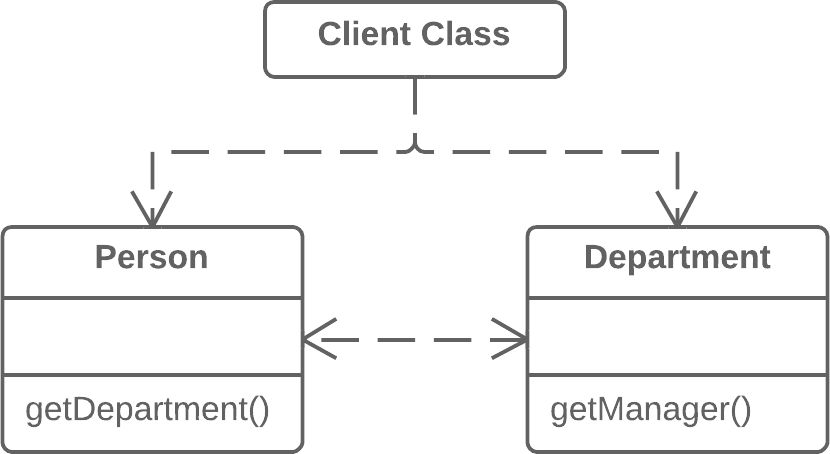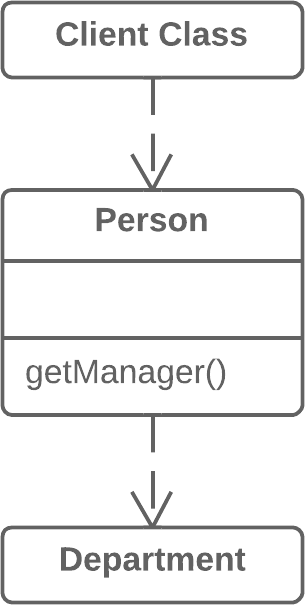Hide Delegate
Problem
The client gets object B from a field or method of object А. Then the client calls a method of object B.
Solution
Create a new method in class A that delegates the call to object B. Now the client doesn’t know about, or depend on, class B.


Why Refactor
To start with, let’s look at terminology:
-
Server is the object to which the client has direct access.
-
Delegate is the end object that contains the functionality needed by the client.
A call chain appears when a client requests an object from another object, then the second object requests another one, and so on. These sequences of calls involve the client in navigation along the class structure. Any changes in these interrelationships will require changes on the client side.
Benefits
- Hides delegation from the client. The less that the client code needs to know about the details of relationships between objects, the easier it’s to make changes to your program.
Drawbacks
- If you need to create an excessive number of delegating methods, server-class risks becoming an unneeded go-between, leading to an excess of Middle Man.
How to Refactor
-
For each method of the delegate-class called by the client, create a method in the server-class that delegates the call to the delegate-class.
-
Change the client code so that it calls the methods of the server-class.
-
If your changes free the client from needing the delegate-class, you can remove the access method to the delegate-class from the server-class (the method that was originally used to get the delegate-class).
 WYPRZEDAŻ ZIMOWA TRWA!
WYPRZEDAŻ ZIMOWA TRWA!
